
Particles
Scope & Guideline
Advancing Knowledge in the Realm of Physics.
Introduction
Aims and Scopes
- High-Energy Physics:
The journal publishes research related to the fundamental forces and particles, including studies on quantum field theory, the standard model, and beyond-the-standard-model physics. - Astrophysical Phenomena:
Research exploring the implications of particle physics in astrophysical contexts, such as dark matter, neutron stars, and cosmic rays, is a significant focus area. - Experimental Techniques and Instrumentation:
The journal covers advancements in experimental methodologies, including detector technologies, data analysis techniques, and simulation methodologies relevant to particle physics. - Theoretical Models and Simulations:
Papers discussing new theoretical frameworks, models, and computational approaches to understanding particle interactions and cosmological phenomena are central to the journal's scope. - Interdisciplinary Approaches:
The journal encourages interdisciplinary studies that bridge particle physics with fields such as condensed matter physics, cosmology, and nuclear physics.
Trending and Emerging
- Dark Matter Investigations:
There is a notable increase in research focused on dark matter, including theoretical models, experimental searches, and implications for astrophysical phenomena, indicating its critical importance in contemporary physics. - Quantum Gravity and Entropy Studies:
Emerging studies exploring the intersection of quantum mechanics and gravity, particularly in the context of black holes and cosmological entropy, signify a burgeoning interest in understanding fundamental theories. - Machine Learning Applications:
The application of machine learning techniques to data analysis in particle physics is gaining traction, showcasing innovative approaches to tackle complex problems and enhance experimental results. - Neutron Star Research:
Research related to neutron stars, particularly their properties influenced by dark matter and other exotic states of matter, is on the rise, highlighting its relevance in both astrophysics and theoretical physics. - New Physics Beyond the Standard Model:
A clear trend is seen in the exploration of theories and models that extend beyond the standard model, including supersymmetry and other novel frameworks, reflecting a community eager to explore new frontiers.
Declining or Waning
- Traditional Nuclear Physics:
Research specifically focused on traditional nuclear physics topics such as basic nuclear structure and decay processes has decreased, possibly as more emphasis is placed on high-energy and astrophysical contexts. - Standard Model Phenomenology:
Studies strictly confined to standard model predictions and phenomenology seem to be waning, as researchers increasingly seek to explore new physics beyond the standard model. - Classical Mechanics Applications:
Papers applying classical mechanics principles to particle physics have become less frequent, reflecting a shift towards more complex quantum and relativistic treatments. - Conventional Particle Detection Methods:
With advancements in technology and methodologies, conventional detection techniques are being overshadowed by novel approaches, leading to a decline in publications focusing solely on these traditional methods.
Similar Journals
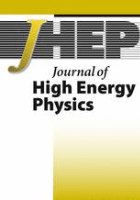
JOURNAL OF HIGH ENERGY PHYSICS
Empowering researchers with cutting-edge discoveries in physics.JOURNAL OF HIGH ENERGY PHYSICS, published by SPRINGER, stands at the forefront of research in the fields of nuclear and high energy physics. With an impressive impact factor and a Scopus ranking of #5 out of 87 in its category, it sits comfortably in the 94th percentile of academic journals worldwide. Since its inception in 1997 and transitioning to Open Access in 2014, the journal has committed itself to the dissemination of peer-reviewed, cutting-edge research that fosters collaboration and innovation across the global scientific community. Located in Germany and reaching audiences worldwide, the journal aims to provide a platform for scholars and researchers to share their findings, thus propelling advancements in theoretical and experimental physics. As it converges into 2024, the JOURNAL OF HIGH ENERGY PHYSICS continues to be an essential resource for anyone engaged in this dynamic field of study.

PHYSICS OF PARTICLES AND NUCLEI
Illuminating the Mysteries of Particles and NucleiPhysics of Particles and Nuclei is an esteemed journal within the field of nuclear and high energy physics, published by Pleiades Publishing Inc. Based in the United States, this journal has been a vital platform for disseminating cutting-edge research since its inception in 1996, with coverage extending until 2024. Indexed under the ISSN 1063-7796 and the E-ISSN 1531-8559, it has established itself as a noteworthy publication, currently categorized in the Q3 quartile according to the 2023 standards for Nuclear and High Energy Physics. With its Scopus ranking placing it at #62 out of 87 in its category, Physics of Particles and Nuclei provides unique insights and discussions that resonate with academics, researchers, and students alike. Although it does not offer open access, the journal continues to serve as a crucial resource for those looking to engage deeply with the latest advancements and theoretical explorations in particle and nuclear physics.
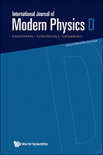
INTERNATIONAL JOURNAL OF MODERN PHYSICS D
Exploring the Cosmos through Rigorous ResearchWelcome to the INTERNATIONAL JOURNAL OF MODERN PHYSICS D, a premier publication dedicated to the advancement of knowledge in the fields of Astronomy and Astrophysics, Mathematical Physics, and Space and Planetary Science. Published by WORLD SCIENTIFIC PUBL CO PTE LTD in Singapore, the journal boasts an impressive impact, being ranked Q2 in Astronomy and Astrophysics and Mathematical Physics, and Q3 in Space and Planetary Science. With a converged publishing timeline from 1996 to 2024, this journal provides a vital platform for researchers and professionals to disseminate their findings, engage with cutting-edge research, and explore emerging ideas in modern physics. Although it operates under a traditional access model, the rigorous peer-reviewed process ensures that only the highest quality research contributes to the collective understanding of our universe. Join us in advancing the frontiers of physics and astronomy!
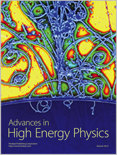
Advances in High Energy Physics
Pioneering Insights in the Realm of High Energy PhysicsAdvances in High Energy Physics, published by HINDAWI LTD, is a premier open-access journal dedicated to the progressive field of Nuclear and High Energy Physics. With an ISSN of 1687-7357 and an E-ISSN of 1687-7365, this journal has been at the forefront of scientific discourse in high energy physics since its inception in 2007. The journal is notable for its impact within the community, currently holding a Q2 ranking in 2023 and positioned at #36 out of 87 in its category according to Scopus, highlighting its significant contribution to ongoing research and advancement in the field. Its accessible nature enables researchers, professionals, and students to engage with cutting-edge findings that shape our understanding of the universe. Spanning publications from 2010 through 2024, Advances in High Energy Physics serves as an invaluable resource for those looking to stay informed about the latest developments and methodologies in high energy physics across the globe.

Journal of Cosmology and Astroparticle Physics
Charting New Frontiers in Astroparticle ResearchThe Journal of Cosmology and Astroparticle Physics (ISSN: 1475-7516) is a premier publication in the field of astronomy and astrophysics, dedicated to advancing our understanding of the cosmos through innovative research. Published by IOP Publishing Ltd in the United Kingdom, this journal has established itself as a vital resource for researchers, professionals, and students alike, with an impressive Scopus rank of #11/90, placing it in the top 12% of its field. The journal aims to foster the dissemination of groundbreaking studies related to cosmology, dark energy, particle physics, and the universe's fundamental structure, making it a key player in shaping contemporary astrophysics discourse. With a Category Quartile of Q2 as of 2023, it continues to attract high-quality contributions that enhance scholarly dialogue. As an accessible platform, it engages a diverse audience interested in the frontiers of astrophysical research, encouraging collaboration and knowledge sharing among the global scientific community.

Radiation Detection Technology and Methods
Bridging Theory and Application in Nuclear PhysicsRadiation Detection Technology and Methods is a prominent academic journal published by Springer Singapore Pte Ltd, dedicated to advancing the field of nuclear and high-energy physics, as well as nuclear energy and engineering. Established in 2017, this journal provides a platform for the dissemination of pioneering research and innovative methodologies in radiation detection technology. As of 2023, it holds a commendable Q2 ranking in both the categories of Nuclear and High Energy Physics and Nuclear Energy and Engineering, underscoring its significance in fostering scholarly discourse within these vital fields. With ISSN 2509-9930 and E-ISSN 2509-9949, the journal aims to cater to a diverse audience of researchers, professionals, and students, emphasizing open access to knowledge. The journal's contributions are particularly crucial for those engaged in the development of safer and more efficient radiation detection techniques, ultimately bridging the gap between theory and practical applications in energy security and health physics. For researchers seeking a dedicated outlet for their work, Radiation Detection Technology and Methods represents an invaluable resource and an opportunity to influence the future of radiation science.

INTERNATIONAL JOURNAL OF MODERN PHYSICS A
Pioneering insights into the fabric of the universe.INTERNATIONAL JOURNAL OF MODERN PHYSICS A, published by WORLD SCIENTIFIC PUBL CO PTE LTD, stands as a pivotal platform in advancing the frontiers of research within the fields of Astronomy and Astrophysics, Atomic and Molecular Physics, and Nuclear and High Energy Physics. Established in 1989, this journal has systematically contributed to the scientific community, with a demonstrated impact as indicated by its Q2 category rankings across these critical disciplines in 2023. Researchers and professionals are encouraged to engage with its rigorous peer-reviewed content, fostering a deeper understanding of modern physics theories and experimental breakthroughs. Although the journal operates under a conventional access model, it remains a vital resource for those seeking to disseminate their findings and stay abreast of cutting-edge developments. With an emphasis on quality and breadth of research, the journal continues to attract submissions from leading physicists and scholars, enhancing its reputation as a key academic resource.

PHYSICAL REVIEW LETTERS
Setting the Standard for Rigorous Physics ScholarshipPhysical Review Letters, published by the American Physical Society, is a premier journal in the field of Physics and Astronomy renowned for its rapid dissemination of high-impact research findings. With a distinguished history dating back to 1958 and an impressive ranking of #13 out of 243 in the general physics category, it stands proudly within the Q1 quartile, placing it in the top 6% of journals in its field. The journal focuses on brief reports of significant fundamental research across all areas of physics, making it an essential resource for researchers, professionals, and students seeking to stay at the forefront of developments in their field. Although Physical Review Letters does not offer open access options, its rigorous peer-review process ensures a high standard of quality and relevance in its published articles. With an unwavering commitment to advancing the understanding of physical science, this journal is indispensable for those looking to make a genuine impact in their research endeavors.
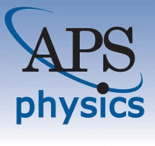
PHYSICAL REVIEW C
Igniting Innovation in Subatomic ResearchPHYSICAL REVIEW C is an esteemed journal published by the American Physical Society, dedicated to advancing knowledge in the fields of nuclear and high-energy physics. With a proud ISSN of 2469-9985 and an E-ISSN of 2469-9993, it has established itself as a leading journal, currently ranked in the Q1 category for its field in 2023, positioning itself in the top tier of scholarly publications. Based in the heart of the United States, at One Physics Ellipse, College Park, MD, PHYSICAL REVIEW C is known for its rigorous peer-review process and is a vital platform for researchers to share their pioneering findings. As part of a prestigious lineup backed by an impressive impact factor, this journal garners significant attention, reflected in its Scopus ranking as #18 out of 87 in the Nuclear and High Energy Physics category, placing it within the 79th percentile. While it currently does not offer open access options, it remains an essential resource for professionals and students seeking to deepen their understanding of nuclear interactions, reaction dynamics, and the fundamental principles governing subatomic particles. The convergence of innovative research from 2016 to 2024 makes it a timely reservoir for groundbreaking studies, thus reinforcing its importance in the scientific community.
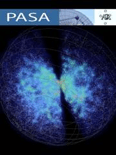
PUBLICATIONS OF THE ASTRONOMICAL SOCIETY OF AUSTRALIA
Advancing Cosmic Knowledge, One Publication at a Time.Publications of the Astronomical Society of Australia, published by Cambridge University Press, stands as a distinguished platform for advancing knowledge in the realms of Astronomy, Astrophysics, Space, and Planetary Science. Hemmed in the United Kingdom, this journal is recognized for its outstanding contributions, reflected in its status as a Q1 journal in both Astronomy and Astrophysics, along with Space and Planetary Science categories as of 2023. With a solid impact factor, it ranks impressively at #23 within its Scopus category, firmly placing it in the competitive 75th percentile. This publication facilitates open discourse and innovative research from its inception in 1996 to the present year of 2024, providing an essential resource for researchers, professionals, and students eager to deepen their understanding of cosmic phenomena. By embracing rigorous peer-review standards and a commitment to scholarly excellence, the journal not only contributes to the scientific community but also fosters the next generation of astronomical research.